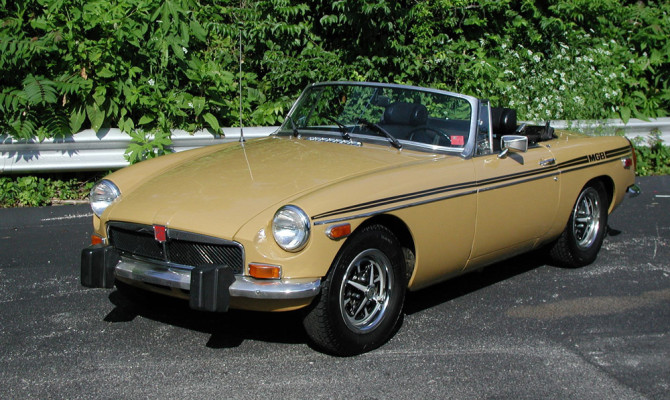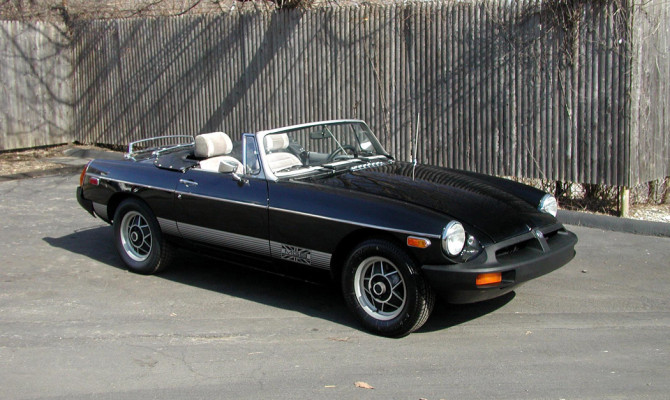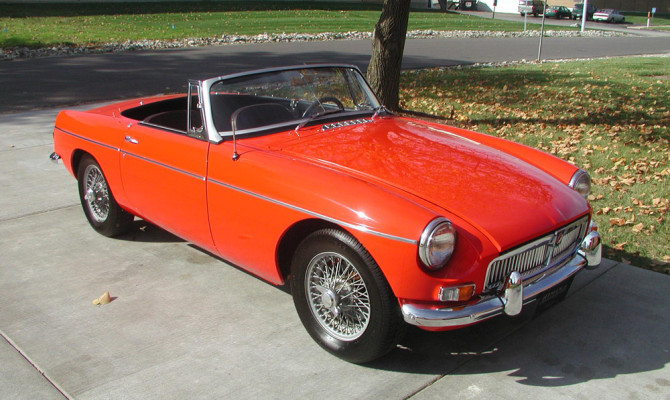By Jonathan A. Stein
With almost 400,000 MGBs built over the course of 18 years, you’d think that there would be very little left that the entire world didn’t know about MG’s most prolific model.
Of course, there’s no secret when it comes to the engine, transmission and suspension, which were heavily based on those of the MGA. And, it’s equally well known that unlike the MGA, the MGB used unibody construction. But here are a few things you probably didn’t know.
One of the reasons the engine bay of the MGB was so wide was to accommodate the Twin Cam cylinder head of the MGA Twin Cam. But many development and reliability problems sent BMC scurrying away from the powerful but problematic engine.
The MGA coupe works development car, registered KMO 326, served as a high-speed test bed for the MGB’s revised front suspension and disc brakes. A disproportionate number of early MGBs destined for North America were finished in Iris blue, a light blue shade carried over from the MGA.
Although the MGB/GT design was prepared by Pininfarina, the original concept for the car came from MG General Manager John Thornley, who conceived the fastback as a poor man’s Aston Martin.
Although North American-bound MGBs received a new padded dashboard without a glove box beginning with the 1968 model year, UK market cars continued on with the less-yielding metal dashboard.
There are plenty other little bits of trivia about the MGB that might not necessarily be considered secrets.
For the North American market, 1969 was the first year of reclining seats and the last year of leather seating surfaces. In 1973 and 1974, U.S. market B/GTs received fabric upholstery, while roadsters used vinyl. And of course there were those unsightly rubber bumpers that were introduced in mid-year 1974 as the most expedient way to meet new 5-mph crash regulations.
The solution to meeting the new federal headlight requirement was even less elegant: raise the ride height until the lights were legal. It didn’t do much for the handling, but the car continued to sell until the bitter end in 1980.
Jonathan Stein writes for Hagerty Insurance. Hagerty is the world’s leading specialist provider of classic car and boat insurance. Learn more at hagerty.ca.
Recent Comments
- { Enjoyed your Forest of Bowland in the BMW X5M, particularly the photo of the BMW in front of the main part of Stonyhurst College where... }
- { Bantam designed the Jeep, not Willy's or Ford. The American military gave the original Bantam prototype to Willys and Ford to copy. There is plenty... }
- { All Escalades come with a 6.2-lilter V8 engine that produces 420 horsepower. A six-speed automatic is the only transmission offered and drives the rear wheels.... }
- { Alexandra is an excellent journalist. }
Popular Posts
- Journey to a ‘Sparkling’ Luxury Okanagan Resort “Four lucky readers will put a Dodge Journey’s weekend-...
- The Need For Speed: Hike Those Highway Limits More than half of those polled believe the province sho...
- Drives-U-Crazy… Erratic drivers. An early morning drive from Kelowna to Vancouver is nor...
- Readers Respond: The Pros and Cons of Increasing B.C. Speed Limits Increasing the speed limits will only increase risk to...
- Honda CR-V Review: The Compact Crossover To Get Things Done The CRV is a very stylish and aerodynamic crossover veh...









